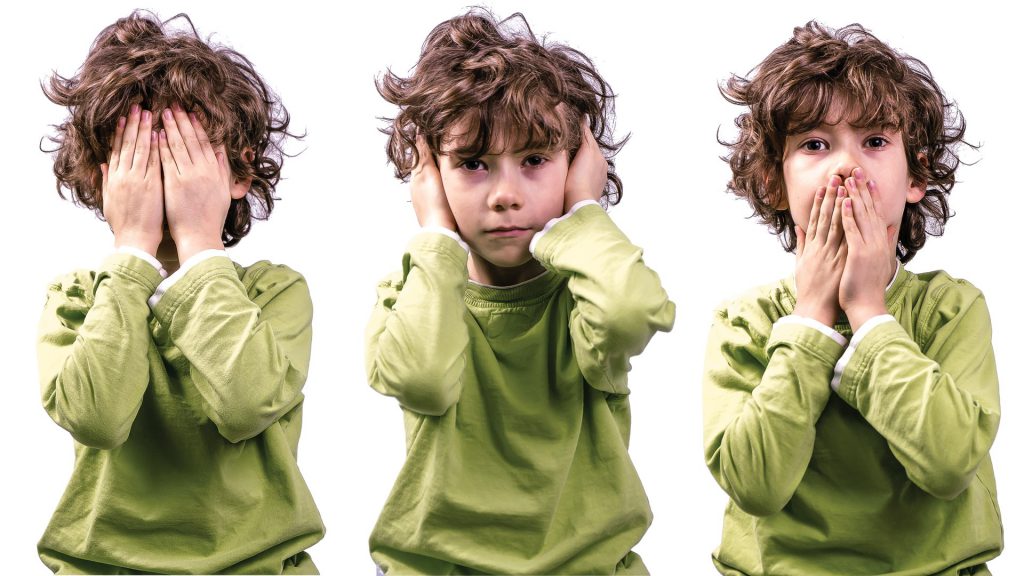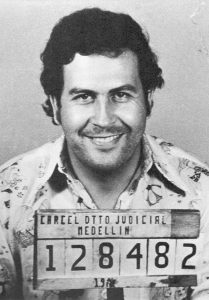Autism Spectrum Condition is essentially a condition that is not uncommon to hear about. It is talked about in many different shows, mentioned in schools, and chances are you may know a person who has autism. However, this condition is heavily stigmatized and little is known about what truly comprises it. People tend to have one rigid definition of autism and what it consists of. Nevertheless, it is important to remember that it entails a wide spectrum, and each person is different with varied circumstances. In terms of communication more specifically, there are two types – verbal and nonverbal. Each has different factors that encompass them, as we will explore in this article.
More and more people are starting to move away from describing autism as a disorder, hence my use of the word ‘condition’ in the above paragraph. Along the same lines, it is important to highlight the person first when referring to someone with autism, seeing as a condition does not define a person as a whole. In conclusion, “person with autism” rather than “autistic person” would be correct. Throughout this article I will also use terms such as needing “more and/or less support” in lieu of using the terms “high and/or low functioning”. This is due to the fact that every individual’s condition is functioning; the only thing that varies is how much or how little support they need in regard to their personal condition (J. Pierucci, personal communication, February 25, 2021).

Courtesy of Healthline
Going back to what constitutes autism; there are many important facts, factors, and/or categories associated with the condition. First and foremost, ASC (Autism Spectrum Condition) manifests itself in various forms that mainly affect social and behavioral skills, and are comprised of restrictive and repetitive behaviors as well as stereotyped interests. This all, however, usually varies with each individual depending on how severe, mild, early, or late the symptoms are, as well as their cognitive ability in regard to their age. “Diagnosis, according to both the DSM-5 and ICD-11, requires evidence of features in two domains: atypicalities in social and communication behaviours, and the presence of restricted and repetitive behaviours. Features should be present from the early years, though diagnosis can happen much later, and frequently does” (Fletcher-Watson & Happé, 2019, p. 32). Behaviors relating to autism can be seen in children as young as months in age; however, it is important to remember every condition varies (Fletcher-Watson & Happé, 2019).
Now how exactly does autism affect communication specifically? Before we tackle this subject matter, and everything under its umbrella, it is important to remember that there are two types of communication associated with autism: verbal and nonverbal. I emphasize this matter because many people do not take into account that just because the individual is not using words, it does not mean they aren’t communicating. They may just use body language and/or technology, for that matter. Several examples will be brought up later in the article. An individual with ASC, “may have difficulty developing language skills and understanding what others say to them. They also may have difficulty communicating nonverbally, such as through hand gestures, eye contact, and facial expressions. Some children with ASD may be unable to speak. Others may have rich vocabularies and be able to talk about specific subjects in great detail” (NIDCD, 2012, para. 5-6).

Courtesy of Spectrum News
An individual’s communication and behavioral skills vary with their age and cognitive development. Problems in communicating do not usually manifest themselves in the pronunciation of words. Rather, they stem from difficulty in using language effectively in regard to rhythm of words and sentences, and, in a nonverbal aspect, being unable to understand body language and certain vocal tones (Fletcher-Watson & Happé, 2019). With this being said, it is important to understand the diversity of presentation in the population that is autistic. How the criteria is measured and identified, again, relies on each individual and how they manifest it to their own accord. In terms of communication, some “difficulties could mean that an individual is entirely non-speaking, speaking a great deal but mainly by echoing, or speaking fluently but with an atypical approach to conversational rules or understanding of non-literal language (e.g. irony, metaphor)” (Fletcher-Watson & Happé, 2019, p. 33). Other individuals with autism may be very social and love making friends, while others choose to keep to themselves. Other individuals with autism may engage in more stimming behaviors, while others don’t. Stimming essentially refers to “self-stimulating behaviors, usually involving repetitive movements or sounds and is part of the diagnostic criteria for autism” (Pietrangelo, 2019, para. 1). Again, it all comes down to the specific individual.
If the individual is verbal, their speech may be comprised of repetitive and/or rigid language. This means that said individual will often say things out of context, as well as mention things that hold no meaning. They may also repeat words or phrases heard at a point in time. This condition is called echolalia. An individual with autism that is verbal may also have uneven language development, which is comprised of a strong vocabulary only in some subject areas, a lack of reading comprehension, and a lack of response to speech around them (NIDCD, 2012).
If an in individual is nonverbal they might communicate through body language and/or technology. Each are efficient ways of communicating, and it varies with each individual. There are several reasons for this variation. It could be the case that the individual has an intellectual condition in which they are unable to acquire speech effectively, or they suffer from anxiety related mutism (Fletcher-Watson & Happé, 2019). Anxiety related mutism “is a childhood anxiety disorder characterized by an inability to speak or communicate in certain settings. The condition is usually first diagnosed in childhood. Children who are selectively mute fail to speak in specific social situations, such as at school or in the community” (Cuncic, 2020, para. 1). Either way it is important to note that communication does not have to be expressed in spoken words. “If either child can learn to communicate, for example via independent use of a text-to-speech device using visual symbols or Makaton signs, then this apparently profound difference might be minimally disabling” (Fletcher-Watson & Happé, 2019, p.33). Makaton signs are essentially a language comprising of signs and symbols that help individuals with autism who are nonverbal and/or find it difficult to communicate verbally (Eton, n.d.).
This is made evident in Carly Fleischmann’s story (Goldberg & Putrino, 2009). For years, many people thought Carly was never going to be able to communicate due to her lack of speech. She showed signs of autism at a very young age and was eventually diagnosed with severe autism and an intellectual disability. Years of extensive therapy went by, and no progressive change was seen. Carly’s speech was not advancing, and it was presumed she would not be able to communicate for the rest of her life. One day, however, when she was eleven, she felt very ill and rushed to a computer to type the words “help” and “hurt.” From then on it was clear that Carly had finally found her way of communicating, and that there was a lot more to her than met the eye. Carly now communicates via technology, and the people around her describe her as a bright, funny, and sassy individual (Goldberg & Putrino, 2009). She continues to inspire many people around her and has gone on to help co-write a book about her life with her father, Arthur Fleischmann, titled Carly’s Voice: Breaking Through Autism (Marso, 2014).

Carly was able to project her voice through means of technology. Take also, for example, Weisblatt et al. (2019), which focused on individuals who lack speech, but demonstrate more skilled receptive language. The main point of this study centered around the concept that a lack of expressiveness may sometimes mean enhanced receptiveness. The people who conducted the study believed that what is expressed verbally by an individual, compared to what is actually internalzied by an individual with autism, can be influenced by a lack of access and/or obstacles in acquiring proper oral motor skills. They used a tablet-based software known as “Point Outwards” to test cognitive strengths associated with developing oral motor skills. Most studies center around communicative speech (e.g., La Valle et al., 2020) but Weisblatt et al. (2019) acts as a testament to how important studying nonverbal communication is, seeing as it is so common in the Autism Spectrum Condition world. A quarter of those affected with ASC are actually minimally to one-hundred percent non-verbal.
It is vital to highlight several strengths in association with autism as well. An individual with autism may have impeccable memory and extreme attention to detail. They may also have heightened senses and therefore increased receptiveness (Fletcher-Watson & Happé, 2019). Society heavily influences what is “normal,” and If something does not fit into the predisposed box, then it is categorized as atypical. When we take out several norms centered around social behaviors, we find that that various “deficits” associated with autism disappear. The key is to understand the various forms of communication related to autism and recognize that “different “is not synonymous with “deficient.”
Autism is often stigmatized as very negative. There is often a “lack of this” and/or “lack of that;” however, it is important to note that that is because many have not learned everything this condition encompasses. Autism is a condition with many factors and concepts which manifest differently in many people. It is an intricate condition that cannot be defined in one simple context or under one umbrella. There are many ways an individual with autism may communicate, and each is valid. It is important to take the time to try and understand each, and to not put autism, and its categories, in one specific box. Speech in regard to autism is expressed through many different means, and that is the true beauty of communication in general.
References
Cuncic, A. (2020, September 18). What is selective mutism? Verywell Mind. https://www.verywellmind.com/what-is-selective-mutism-3024702
Eton Institute (n.d.). Makaton: The sign language for non-verbal autism. https://etoninstitute.com/blog/makaton-the-sign-language-for-non-verbal-autism
Fletcher-Watson, S., & Happé, F. (2019). Autism: A new introduction to psychological theory and current debate. Routledge.
Goldberg, A. B., & Putrino, L. (2009, August 5). Teen locked in autistic body finds inner voice. ABC News. https://abcnews.go.com/2020/MindMoodNews/story?id=8258204&page=1
La Valle, C., Plesa-Skwerer, D., & Tager-Flusberg, H. (2020). Comparing the pragmatic speech profiles of minimally verbal and verbally fluent individuals with autism spectrum disorder. Journal of Autism and Developmental Disorders, 50, 3699–3713. doi:10.1007/s10803-020-04421-7
Marso, S. (2014, May 5). Carly’s voice: Breaking through autism. Carolina Pediatric Therapy. https://www.carolinapeds.com/blog/2014/05/carlys-voice-breaking-through-autism
National Institute on Deafness and Other Communication Disorders (NIDCD). (2012). Communication problems in children with autism spectrum disorder. U.S. Dept. of Health & Human Services, National Institutes of Health. https://www.nidcd.nih.gov/sites/default/files/Documents/health/voice/NIDCD-Communication-Problems-in-Children-with-Autism-FS_0.pdf
Pietrangelo, A. (2019, June 28). Stimming: Causes and management. Healthline. https://www.healthline.com/health/autism/stimming
Weisblatt, E. J., Langensiepen, C. S., Cook, B., Dias, C., Plaisted Grant, K., Dhariwal, M., Fairclough, M. S., Friend, S. E., Malone, A. E., Varga-Elmiyeh, B., Rybicki, A., Karanth, P., & Belmonte, M. K. (2019). A tablet computer-assisted motor and language skills training program to promote communication development in children with autism: Development and pilot study. International Journal of Human-Computer Interaction, 35(8), 643–665. https://doi.org/10.1080/10447318.2018.1550176



23 comments
Paula Ferradas Hiraoka
First of all, this was a good article Nydia! I don’t know a lot about autism, so it was amazing to read this article! What I only knew about autism is that their communication is almost nothing, but now I know that there are two types of autism. As you mentioned, many people consider nonverbal communication to not be communication, but everyone communicates in some nonverbal way. Good topic and well written!
Sara Davila
I loved how much information on autism this article provides to its audience. The author did a great job in bringing to light the various forms of autism. I did not know that there are various ways that people with autism communicate and the story was very easy to follow and learn. I hope others get to read this article to further spread education on this subject.
Arturo Canchola
Hi Nydia! Thank you for bringing attention to an overlooked and often misunderstood topic. I agree, the medical and psychological communities stress the importance of understanding that individuals with ASD are, as you said, “different, not deficient.” Making accommodations for those with ASD, such as focusing more on nonverbal communication, does not need to be challenging. Instead of forcing individuals with ASD to conform to our standards, I think we can make small actionable changes to be more welcoming to neurodiverse people.
Amanda Uribe
Great article Nydia. I love how you first talked about person first languange. It is so important to address that when speaking about conditions! I also think that it is amazing how technology has been able to help people with autism communicate. I agree that autism is very misunderstood and I like how you didn’t generalize. Again, great article.
Sonora Mata
Hi Nydia! Your article is very well written and I applaud you for raising awareness on a subject very highly stigmatized while also doing a great job of using acceptable speech. I’ve always been fascinated with the ways humans communicate nonverbally. As you mentioned, many people consider nonverbal communication to not be communication, but everyone communicates in some nonverbal way. This is why the pandemic and everything being online made learning/working very difficult for many people, especially people with ASC.
Irene Urbina
Amazing article! I really liked how you talked about autism as a condition and not a disorder and how it does not define the person who are in the spectrum. As time progresses, people should understand that whether a person communicates verbally or non/verbally they are still people and should be treated as so. There are so many misconceptions and stereotypical ideas that come to mind when talking about people with autism that are not always true because each person is different and will show this condition according to where they are in the spectrum.
Elizabeth Saxon
I love how this article brings awareness to autism. Most people stereotype autism but don’t truly understand what it means to be a person with autism. I believe that autism is something that everyone should educate themselves on in order to make an assumption about it. This article opened my eyes a lot about the common misconceptions people associate with autism that aren’t politically correct.
Erick Velazquez
What a well written article! Although I have seen different videos and read about autism before, this gave me even more information and knowledge I didn’t know before! I think it’s awesome that you point out how to be politically correct when addressing someone with an autism condition. I know it’s widely known but I think the light should still be shone at what autism is and this article definitely did that and beyond. Very very great article!
Perla Ramirez
This was an amazing article on autism and the feet it could have on someone. I like how you mentioned that autism is a condition and not something that defines who they are as a person. I thought there was only one type of autism and it just varies but its more than that. Theres a whole spectrum from verbal or nonverbal and high or low functioning.
Christopher Metta Bexar
Autism is indeed a syndrome. And the terms high and low functioning reflect that. The highest form of autism is very high functioning. In fact the second wealthiest man in America has it. It is called Asperger’s Syndrome, and the man I am mentioning is the chairman of Microsoft. So he functions in society very well.
I have also taught students with Autism. They are also sometimes treated as is they have behavior disorders like the students who are persons with ADHD or ADD. A lack of attention or inattention does not automatically make you a behavior problem.
I am glad the author pointed these things out.